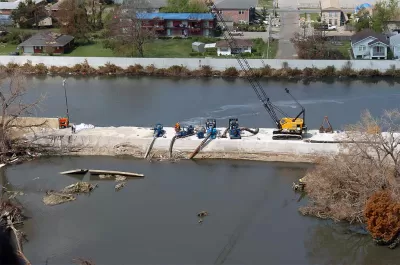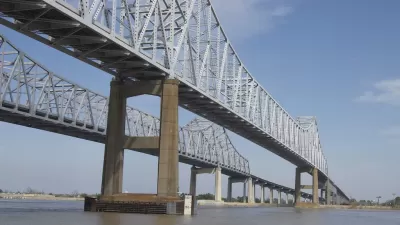The city plans to use a different approach to tackle its longstanding flood problems.

Beau Evans reports on efforts in New Orleans to address flood threats by shifting away from pumping water to retaining it. “Doing so would ease the burden placed on pumps and underground drainage pipes during storms, and more water stored over time would help replenish the city's groundwater levels to counteract the sinking effects of subsidence,” says Evans.
The 2013 Urban Water Plan described the many challenges New Orleans faces in dealing with stormwater. “Perhaps more concisely than any other document, it dissects the combined influences of the city's low-lying topography, subsidence, impervious surfaces and the constant threat of heavy rains that often overwhelm the drainage system,” reports Evans.
Evans says the city has been slow in getting projects off the ground that use the retention-hold approach, with a backlog of about $250 million in projects when Mayor LaToya Cantrell came on board in the spring. A series of green infrastructure projects to contain water are planned for the next several months, including construction of retention ponds, rain gardens, and permeable pavement.
FULL STORY: New Orleans dips its toes into living with water

Planetizen Federal Action Tracker
A weekly monitor of how Trump’s orders and actions are impacting planners and planning in America.

Maui's Vacation Rental Debate Turns Ugly
Verbal attacks, misinformation campaigns and fistfights plague a high-stakes debate to convert thousands of vacation rentals into long-term housing.

San Francisco Suspends Traffic Calming Amidst Record Deaths
Citing “a challenging fiscal landscape,” the city will cease the program on the heels of 42 traffic deaths, including 24 pedestrians.

Amtrak Rolls Out New Orleans to Alabama “Mardi Gras” Train
The new service will operate morning and evening departures between Mobile and New Orleans.

The Subversive Car-Free Guide to Trump's Great American Road Trip
Car-free ways to access Chicagoland’s best tourist attractions.

San Antonio and Austin are Fusing Into one Massive Megaregion
The region spanning the two central Texas cities is growing fast, posing challenges for local infrastructure and water supplies.
Urban Design for Planners 1: Software Tools
This six-course series explores essential urban design concepts using open source software and equips planners with the tools they need to participate fully in the urban design process.
Planning for Universal Design
Learn the tools for implementing Universal Design in planning regulations.
Heyer Gruel & Associates PA
JM Goldson LLC
Custer County Colorado
City of Camden Redevelopment Agency
City of Astoria
Transportation Research & Education Center (TREC) at Portland State University
Jefferson Parish Government
Camden Redevelopment Agency
City of Claremont





























